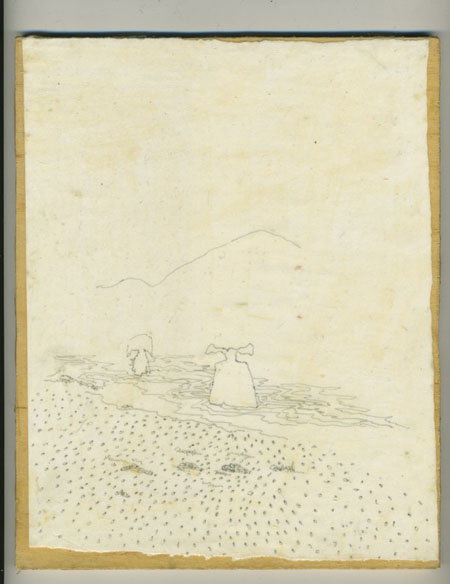![]() body | color | collections | commodity | cube | document | fabric | fetish | gender | glass | home | identity | living | machine | metal | minimal | mobility | narrative | olfactory | organic |
body | color | collections | commodity | cube | document | fabric | fetish | gender | glass | home | identity | living | machine | metal | minimal | mobility | narrative | olfactory | organic |
![]() pain | paper | plastic | plugs | power | protective | rectangular | ritual | round | sound | souvenir | spiritual | style | text-based | time | tool | touch | uniform | value | visual | warm | wood
pain | paper | plastic | plugs | power | protective | rectangular | ritual | round | sound | souvenir | spiritual | style | text-based | time | tool | touch | uniform | value | visual | warm | wood
| Drawing with Pen on Paper | |||
Narrative: The marker bodies, caps, and plugs are formed from plastic resin. The marker reservoirs are formed from polyester. Powder and water are used to form the felt writing tip. In addition, felt-tipped pens require ink, and the pigments and synthetic substances used to make it. Toluol and xylol are synthetics used as solvents in dye as well as chemicals such as cyclic alkylene carbonates. Conventional additives, such as nonylphenylpolyglycol ether, alkylpoly-glycol ether, fatty acid polyglycol ester, or fatty alcohol ethoxalates, and preservatives, such as ortho-phenolphenyl and its sodium salt, ortho-hydroxydiphenyl, or 6-acetoxy-2,4-dimethhyl-m-dioxane, may also be added to the mixture. To make the body of the marker, plastic resin is injection-molded into a pen's body. Pen caps and plugs are formed in the same manner as the barrel. The nib, or tip, of the marker is made from powder mixed with water, molded, and baked into its pointed or flat form. Using one machine for all the following functions, an assembler then places a polyester cylinder inside the marker barrel to form a reservoir for the ink, fills the reservoir with ink, and inserts the nib at the bottom and the cap at the top. The paper was made from pulp obtained by chemical means, known as kraft pulping. Chips of wood were placed in a large, sealed container known as a digester. The digester contained a strongly alkaline solution of sodium hydroxide and sodium sulfide. Bleaching removes lignin and involves mixing the pulp with a series of oxidizing chemicals that react with the lignin. After each mixture, the pulp was washed with an alkaline solution that removes the treated lignin. Fillers were added to the pulp. (A typical filler is a clay known as kaolin. Other chemicals often added to pulp include starches or gums. Rosin and alum are often added as sizers, making the paper less absorbent.) Pulp was added to water to form slurry in order to make paper with an even density. The slurry was pumped onto a moving mesh screen made up of very fine wires of metal or plastic. Water drained through the small openings in the mesh, and formed a sheet of wet material from the slurry. The sheet was moved on a series of belst made of felt containing wool, cotton, and synthetic fibers. The dried sheets moved between rollers known as calendars to make it smooth. The most common softwood used to make plywood in the United States is Douglas fir. Composite plywood has a core made of particleboard or solid lumber pieces joined edge to edge. It is finished with a plywood veneer face and back. Softwood plywood sheets designed for installation on the interior of a structure may use a blood protein or a soybean protein adhesive, although most softwood interior sheets are now made with the same phenol-formaldehyde resin used for exterior sheets. The process includes felling the trees, preparing the logs, making the veneer, and finally forming the plywood sheets. |
 |
||
![]()
